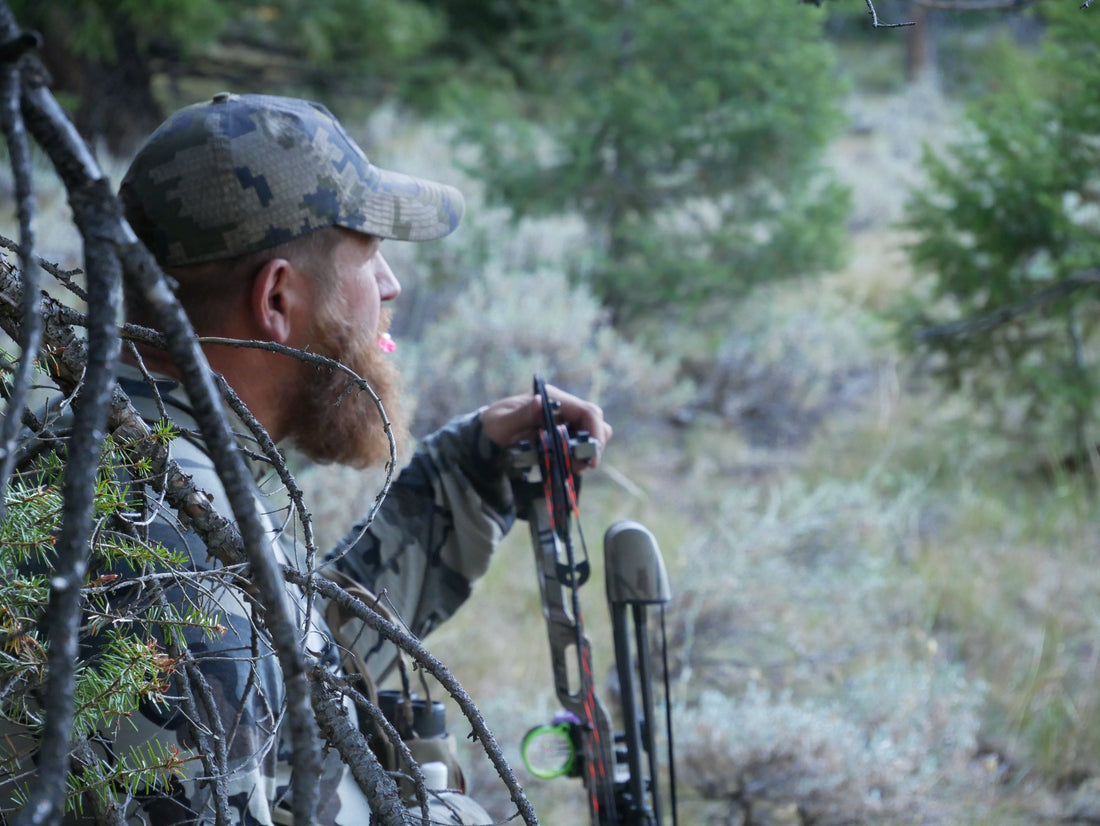
Finding Success on Tough Elk Hunts
Zach BowhayLet’s face it: elk hunting is tough. That’s true no matter what state you’re in or what tag you hold, but it’s especially true in over-the-counter or general units. I get lucky occasionally and draw a good tag somewhere, but most of my hunting career has been spent grinding it out on these hunts. As challenging as they are, they’re the ones I love the most. Because when you finally get your opportunity and haul a bull off the mountain, you know it was hard-earned—and that kind of success is oh so sweet.
Many factors come into play when it comes to finding success on challenging hunts. Hunting know-how is a big one, and that only comes with experience. The good news is there are plenty of ways to fast-track your success. Let’s dive into a few of them.

Know When it is time to Bail
One mistake I see many hunters make, especially newer elk hunters, is not knowing when to leave and find a new spot. There’s a long-standing saying: “Don’t leave elk to find elk.” And while that’s generally good advice, sometimes it’s precisely what you must do.
Off the top of my head, I can count at least a half-dozen bulls I’ve killed after deciding to move areas when things weren’t working. In nearly every case, it wasn’t that elk weren’t around; it was just that something wasn’t clicking. There is too much hunting pressure, bad wind conditions, non-cooperative bulls…, and the list goes on. Sometimes, a spot just isn’t working out. Knowing when to cut your losses and move on is a lesson worth learning sooner rather than later.
Walking away from a plan or an area you scouted all summer is tough, but sometimes it’s the best move. I’ll dive deeper into this in a future article, but it’s always wise to have a Plan A, B, C, and D, just in case.
Be Willing to Adapt Your Tactics
Just like bailing on a hunting spot, abandoning your go-to tactic for something new can be tricky. Switching to spot-and-stalk or ambush hunting can feel intimidating if you've always hunted elk by calling.
For most elk hunters, the dream scenario is a big bull screaming his head off as he charges into a calling setup. Believe me, I’m no different. But the reality, especially in high-pressure areas, is that this doesn’t happen nearly as often as it does in our daydreams at work.

More often than not, you’ll find yourself playing a game of cat and mouse with a call-shy bull. Good calling, proper setup, strategic movement, and a little luck are usually required in these cases. It can happen, but what if it doesn’t?
That’s why I always keep a ground blind in my rig. While hunting, you’ll sometimes come across spots where ambushing a bull or a herd might be your best option. Having a ground blind or treestand with you is another tool in your arsenal when the situation calls for it. I’d say 90% of the time, my pop-up blind stays in the truck, but that other 10%? It put a few nice bulls in the truck's bed, making the extra effort well worth it.
Sit Back and Observe
I did a Tech Tip Tuesday video about this for the IA Instagram page this past October. Sometimes, we get so caught up in the hunt that we almost panic, feeling like time is slipping away, so we keep grinding through the timber, often with no results. Sometimes, that’s the best approach, but sometimes, the best move is to step back and observe.

This is one of my favorite things to do at the start of a hunt or when I’m not getting into elk as much as I’d like. My go-to strategy is getting up high, where I can glass a lot of terrain in multiple directions during prime hours, the first two and last two hours of daylight. Some might see this as “wasted hunting time,” but I see it as gathering crucial intel for my hunt.
As simple as this concept is, it can be challenging to grasp. But here’s the bottom line: the best way to kill elk is to be where the elk are. By sitting back and observing, you pinpoint exactly where they’re moving. Once you’ve got them located, you can use the heat of the day or the cover of night to get yourself in position for the next prime hunting window. It doesn’t always work; elk can and will move, but I promise, it’s time and effort well spent on any hunt.
It Only Takes One
"It only takes one" is easily my favorite quote when it comes to elk hunting. I know it’s pretty self-explanatory, but let me share my take on it. No matter how challenging a hunt has been, how bad the weather is, or how uncooperative the elk have been, it only takes one bull making a mistake to turn everything around. Instantly, your hunt can go from a bust to the best one of your lives.
To hammer this point home, let me tell you a story from 2003 that taught me this lesson the hard way. I had been hunting for nearly two weeks with my dad, and honestly, I wasn’t nearly as mentally strong as I am today. My wife and kids had come up to elk camp for the weekend and were heading home on Sunday afternoon. Before she left, I told my wife, “If things don’t heat up soon, I might head home and work for a few days.”
After they drove off, my dad and I hiked up a ridge to one of our favorite evening spots. We called in a few spots but got the same results we’d been dealing with all week: nothing. Most of the way up the mountain, we came across a small meadow with some fresh elk sign. I motioned for my dad to set up at the upper edge of the clearing while I stayed back to call.
I let out a few soft cow calls and immediately heard the sound of an elk running. At first, I thought we had spooked a herd, but then I realized the noise was getting closer, fast. Suddenly, a six-point bull busted out of the timber at a full sprint, heading straight for me. He blew right past my dad, and as he dropped into a dip, I drew my bow, knowing he’d pop up right in front of me. Sure enough, at 20 yards, he slowed down, searching for the cow he thought he’d heard. I held at full draw, waited for him to turn broadside, then settled my pin and let the arrow fly.
That bull ran no more than 100 yards before going down, and just like that, my season became one of my favorite hunting memories. One moment, I was debating heading home. The next, I was standing over a bull. It only takes one.

Putting it All Together
Since that hunt in 2003, nearly all of my success has come from my willingness to adapt and shift tactics when things aren’t going my way. If there’s one lesson I’ve learned over the years, it’s that elk hunting rarely unfolds how you expect it to. The guys who consistently fill tags aren’t just the best callers or the best shots; they’re the ones who recognize when a plan isn’t working and aren’t afraid to adjust.
The number one question I hear from hunters is, “What’s the secret to success?”
My answer? There isn’t just one thing. It’s not about having the perfect call sequence, the best gear, or even the best spots. It’s about keeping an open mind and making wise decisions in real time. That means:
1. Entering the field with a willingness to try something new, even if it pushes you out of your comfort zone.
2. Staying committed to finding elk, even if it means sacrificing valuable hunting time to relocate.
3. Hunting every day with the mindset that it only takes one encounter to turn a tough season into one you’ll never forget.
Elk hunting is a mental grind. There will be days when nothing seems to go right, the woods feel empty, and you question why you’re even out there. But if you stick with it, stay adaptable, and keep believing in that one opportunity, you’ll eventually find success. Because in the end, the hunters who adjust, push through, and stay in the game are the ones who consistently pack out bulls.

Zach Bowhay is known as a hunter and writer who has successfully hunted many species all across the western states and beyond. Specifically, he is highly regarded in the western hunting community as an expert in DIY elk hunting on public lands. For 15 years he has been a well-published writer, sharing his love of the outdoors and expertise in both gear and tactics through his writing as well as video and photos. When not spending time with his wife and three kids he can be found roaming the mountains of the west in the pursuit of adventure.
Find him on Instagram
